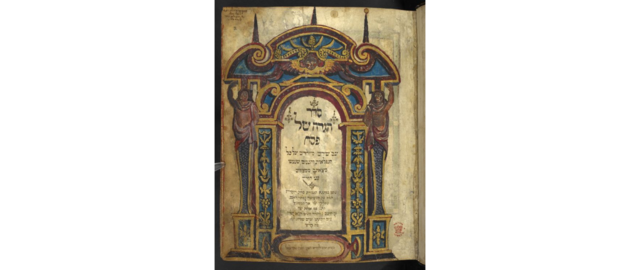The Haggadah is an interesting part of Jewish history—a manuscript used in the Passover Seder. While Pesach has already concluded this year, the Haggadah remains a fascinating way to learn more about Jewish culture and heritage. There are many Haggadahs that have distinguished themselves as important fragments of history, such as the unusual Bird’s Head Haggadah and the well-traveled Sarajevo Haggadah, found in Germany and (initially) Spain, respectively. Spain, in particular, is the site of many great kosher vacations and is a great destination for any kind of Jewish tour seeking to learn more about the past. Spain is also the home of another illustrious Haggadah, a ceremonial text that draws from a variety of artistic sources.

Golden Haggadah | (c) en.wikipedia.org/wiki/Golden_Haggadah
About the Golden Haggadah
The Golden Haggadah was said to have been made in Catalonia, possibly in the city of Barcelona, Spain. Its inception could be dated to around 1320, and was made using gold leaf (hence its name) and had High Gothic-style drawings. This Paris-based art style resulted in a very medieval look at the historical events recorded in the manuscript. For example, the Egyptian Pharaoh resembles a European king, complete with crown and scepter. Interestingly enough, like the Sarajevo Haggadah, the Golden Haggadah also contains Islamic-style geometric art patterns within it, suggesting that the two illustrators of the manuscript were influenced by a variety of sources. It survived the expulsions of 1492 and ended up in the hands of Jewish poet Joseph Almanzi, becoming part of his collection. Eventually, his collection would end up in the care of the British Museum, where it remains to this day.
The Influence of the Ages
The Golden Haggadah is a work of art, with striking illuminations and fascinating influences. The exact details of who commissioned it are unknown, although there are some theories. Regardless, the historical context behind this Haggadah conception is interesting and worth looking into. Our Jewish heritage tours through Spain (specifically Salamanca) have illuminated us on certain things, but it’s always amazing to see a manuscript, designed to preserve history, have its own fascinating history and journey through the centuries.
